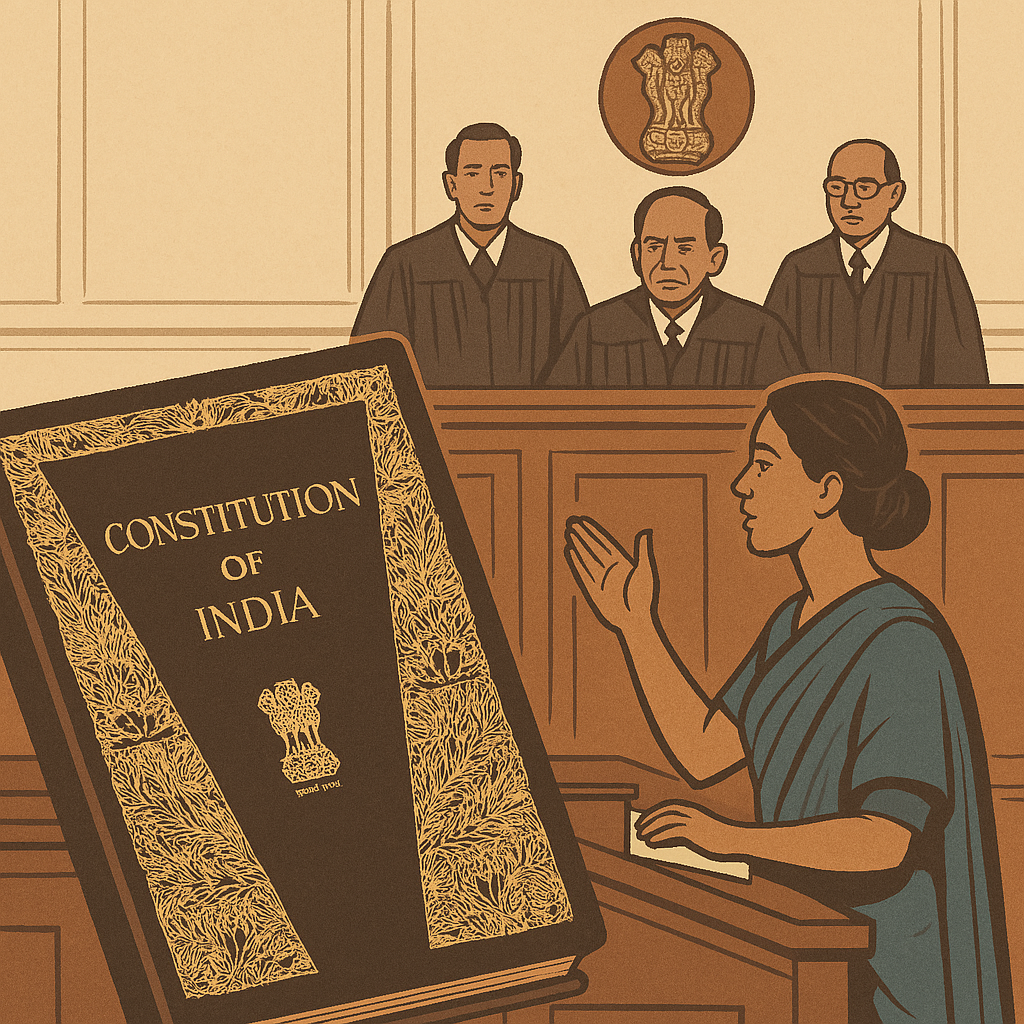🏛️ Landmark Case: State of Madras v. Champakam Dorairajan (1951)
📝 Summary:
The Champakam Dorairajan case was the first Supreme Court ruling to strike down a government policy on the basis of violating fundamental rights, leading to the First Constitutional Amendment in India.
📚 Background
In the early years of independent India, caste-based inequality and social justice were two sides of the same coin. The Madras Government had introduced a communal Government Order (G.O.) that reserved seats in educational institutions based on caste and religion.
Champakam Dorairajan, a Brahmin woman, was denied admission to a medical college even though she had higher marks than candidates from reserved categories. She filed a petition, claiming this violated her fundamental rights under Article 15(1) (Right against discrimination) and Article 29(2) (Right to education and cultural protection).
⚖️ Legal Issue
The main question before the Supreme Court was:
Can the State make caste- or religion-based reservations in public institutions if it violates the fundamental rights guaranteed under the Constitution?
🧑⚖️ Supreme Court Verdict
The Court held that:
-
Communal reservations are unconstitutional
The communal G.O. violated Article 15(1), which prohibits the state from discriminating against citizens solely on the basis of religion, race, caste, sex, or place of birth. -
Article 29(2) ensures equal access
The order also breached Article 29(2) by denying admission to a person solely because she belonged to a particular community. -
Directive Principles ≠ Fundamental Rights
The State of Madras argued that the reservation policy was based on Directive Principles of State Policy (DPSP), especially Article 46, which encourages promotion of educational interests of weaker sections.
The Court clarified that DPSPs are non-enforceable and cannot override Fundamental Rights.
🔥 Aftermath: First Constitutional Amendment
This verdict shook the political landscape. In response, the government introduced the First Constitutional Amendment Act, 1951, inserting Article 15(4):
“Nothing in this article shall prevent the State from making special provisions for the advancement of any socially and educationally backward classes of citizens or for the Scheduled Castes and the Scheduled Tribes.”
This amendment legalized caste-based reservations and laid the foundation for India’s affirmative action framework.
📌 Significance
-
First major conflict between Fundamental Rights and Directive Principles
-
Prompted the first-ever amendment to the Constitution
-
Set the tone for future debates on reservation vs merit
🧠 Conclusion
The Champakam Dorairajan case stands out as a turning point in Indian constitutional law. It revealed the tensions between social equality and individual rights, forcing lawmakers to refine the Constitution itself. It was a bold reminder that while the Constitution empowers reform, such reform must stay within the framework of justice and fairness—or evolve to accommodate it.

